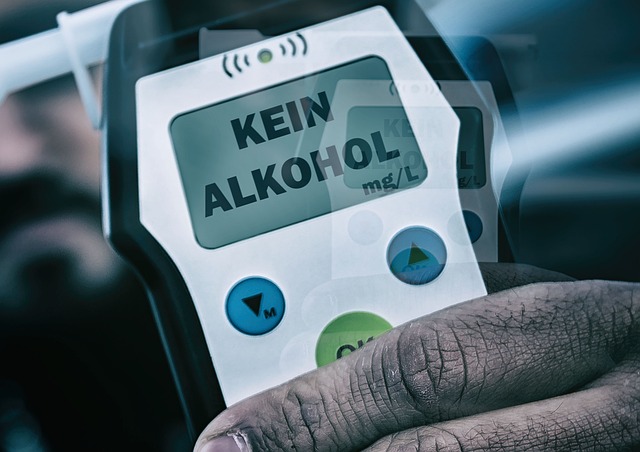In the face of high-risk DUI reoffenders, traditional tactics fall short. Emerging technologies in DUI law are revolutionizing the approach by leveraging advanced predictive analytics and innovative monitoring systems. These tools, including real-time alcohol tracking and digital intervention platforms, offer personalized support, disrupt recidivism patterns, and enhance public safety while addressing underlying issues like substance abuse. However, ethical considerations are paramount to ensure these innovations are integrated fairly and equitably, combining technology with principles of justice for effective DUI recidivism reduction.
In the pursuit of breaking the cycle of DUI recidivism, understanding high-risk reoffenders is paramount. This complex issue demands innovative solutions, especially with emerging technologies in alcohol monitoring and intervention playing a growing role. Traditional approaches have their limits, prompting a shift towards data analytics and AI in predictive policing for DUI. By leveraging these tools, we can identify at-risk individuals more accurately and intervene effectively. However, ethical considerations must guide this progress to ensure fairness and reduce recidivism sustainably.
- Understanding High-Risk Reoffenders and DUI Recidivism
- Traditional Approaches to Addressing DUI Recidivism
- Emerging Technologies in Alcohol Monitoring and Intervention
- The Role of Data Analytics and AI in Predictive Policing for DUI
- Ethical Considerations and Future Directions for Reducing DUI Recidivism
Understanding High-Risk Reoffenders and DUI Recidivism

In the realm of criminal justice, high-risk reoffenders, particularly those with a history of driving under the influence (DUI), pose a significant challenge. DUI recidivism is a pressing issue that has prompted legal professionals to explore innovative solutions using emerging technologies in DUI law. These individuals often exhibit a pattern of behavior that indicates a higher likelihood of reoffending, making it crucial to implement targeted interventions.
Understanding high-risk factors and utilizing cutting-edge tools are key to breaking the cycle of DUI recidivism. Emerging technologies offer promising approaches, from advanced predictive analytics for risk assessment to innovative monitoring systems. By integrating these innovations into existing legal frameworks, the goal is to create more effective strategies that disrupt the path towards repeat offenses, ultimately enhancing public safety.
Traditional Approaches to Addressing DUI Recidivism

In addressing DUI recidivism, traditional approaches have long centered on enforcement and punitive measures. These methods include stringent penalties, license suspensions, and mandatory arrests, aiming to deter repeat offenses. However, these tactics often fail to tackle the underlying issues that contribute to DUI reoffending, such as substance abuse, mental health problems, or lack of access to treatment and rehabilitation services.
Emerging technologies in DUI law are now offering new avenues for breaking this cycle. From advanced data analytics to predict recidivism patterns, to innovative treatment programs utilizing virtual reality and digital therapy, these tools aim to prevent reoffending by identifying high-risk individuals early and providing personalized interventions. Such approaches not only enhance traditional methods but also foster a more holistic understanding and effective management of DUI recidivism.
Emerging Technologies in Alcohol Monitoring and Intervention

The field of DUI (Driving Under the Influence) law is constantly evolving, and emerging technologies are playing a pivotal role in breaking the cycle of reoffending among high-risk individuals. One notable advancement is the implementation of real-time alcohol monitoring devices, which offer a more effective approach to intervention. These innovative tools, often worn as ankle bracelets, continuously track an individual’s blood alcohol level, providing immediate feedback and alerts when alcohol consumption exceeds permissible limits. This technology not only enables authorities to enforce compliance but also empowers at-risk offenders by fostering a sense of accountability.
Additionally, digital intervention platforms are gaining traction, leveraging data analytics and artificial intelligence to identify patterns and triggers associated with impaired driving. These platforms can personalize support networks, offer virtual counseling sessions, and provide accessible resources tailored to individual needs. By combining these emerging technologies in DUI law with traditional rehabilitation methods, there is a greater potential to disrupt the reoffending pattern and promote long-term behavior change among high-risk reoffenders.
The Role of Data Analytics and AI in Predictive Policing for DUI

In the realm of predictive policing, emerging technologies like data analytics and artificial intelligence (AI) are revolutionizing how law enforcement approaches high-risk offenders, including those accused or convicted of driving under the influence (DUI). These innovative tools leverage vast amounts of historical data to identify patterns and predict potential DUI-related incidents. By analyzing various factors such as previous offenses, demographic information, and geographic trends, AI algorithms can pinpoint areas prone to DUI activities, enabling targeted prevention strategies. This proactive approach is a significant departure from traditional policing methods, focusing on addressing issues before they escalate.
The application of data analytics in DUI law brings about a game-changer in public safety. It allows law enforcement agencies to allocate resources more efficiently, setting up dynamic surveillance in high-risk zones. Moreover, AI-driven predictive models can assist prosecutors and judges by providing insights into offender behavior, potentially influencing sentencing decisions and post-release monitoring programs. As these emerging technologies continue to evolve, they hold immense potential to break the cycle of reoffending and reshape the landscape of DUI law, ultimately fostering safer communities.
Ethical Considerations and Future Directions for Reducing DUI Recidivism

In addressing high-risk reoffenders and breaking the cycle of DUI recidivism, ethical considerations play a pivotal role. As legal systems grapple with this complex issue, emerging technologies in DUI law present both opportunities and challenges. For instance, innovative tools like advanced predictive analytics can identify at-risk individuals more accurately, allowing for targeted interventions before repeat offenses occur. This not only respects the rights of citizens but also demonstrates a proactive approach to public safety.
Future directions should focus on integrating these technologies ethically and equitably. This includes ensuring access to legal representation for all, maintaining transparency in data collection practices, and promoting community-based solutions that foster rehabilitation rather than solely punishment. By combining cutting-edge technology with ethical principles, there’s a promising path forward to reduce DUI recidivism effectively while upholding the values of fairness and justice.
Emerging technologies in alcohol monitoring and intervention, coupled with data-driven predictive policing strategies, offer promising avenues to break the cycle of DUI recidivism. While traditional approaches have their merits, the future of reducing high-risk reoffender behavior lies in innovative solutions that integrate advanced analytics and ethical considerations. By leveraging these emerging technologies, we can move towards a safer and more responsible driving environment.






